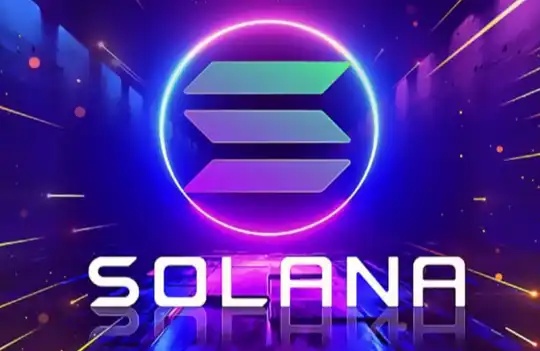Frax founder: In the AI + meme craze, how do we view the premium attributes of L1 tokens and correctly value them?
Original author: Sam Kazemian, founder of Frax Finance
Original translation: Xiyou, ChainCatcher
On October 24, Frax Finance founder Sam Kazemian wrote an article discussing how to correctly evaluate the value of crypto assets. He divided the assets in the crypto market into two main categories: "L1 tokens (Type 1)" and "Dapp and L2 and other equity tokens (Type 1)", and explained the difference between L1 tokens and DApp and L2 tokens. In the article, he emphasized that the value of L1 tokens is more similar to sovereign assets, and there is a premium because they are "productive assets"; Dapp and L2 tokens are more like equity assets, and they seem to have no more value except for generating cash flow.
ChainCatcher translated and organized its content as follows:
1. There has been a lot of talk about how to evaluate the value of different crypto assets, especially the recent AI/meme coin craze. But I want to explain how to properly evaluate the value of the most important large-scale crypto assets: the contrast between L1 tokens and "type 2" tokens (i.e. dapp/L2/"equity" tokens).
2. L1 tokens tend to have a mysterious "L1 premium", but no one has systematically explained this. Many people think this is a speculative Ponzi scheme, but the opposite is true. The L1 premium is more fundamental than most people realize.
3. L1 assets (such as ETH, SOL, NEAR, TRX, etc.) are the "sovereign scarce assets" of the on-chain economy. They are the most liquid assets in the economy. Other projects will accumulate these assets, use them to build infrastructure/decentralized finance (DeFi), and use them to incentivize liquidity, making it a safe haven asset in a crisis.
4. Whenever this happens, these assets will become "interest-bearing" by issuing tokens of other projects to holders of scarce assets, and these tokens are issued through liquidity provision, initial coin offerings (ICOs), decentralized finance (DeFi), airdrops, and other innovative means.
@DefiIgnas has a good explanation for this: L1 tokens are productive assets that can be used to obtain ecosystem airdrops, staking rewards, and their value will increase as the ecosystem expands. If you add in airdrops obtained by holding ETH, SOL, NEAR, etc., L1 tokens generally perform better than spot prices.
On the contrary, L2 tokens are non-productive assets, cannot earn native rewards through staking, are generally not used as fee tokens (although there are a few exceptions), and have high inflation from unlocking. In addition, L2 ecosystem protocols rarely reward holders of L2 tokens (through airdrops, etc.).
5. In a sovereign economy (i.e., a blockchain) system, scarce L1 assets represent interest generated in the labor of building a digital economic country (blockchain), and decentralized application (Dapp) tokens often represent the actual labor/gross domestic product (GDP) performed by humans in that economy.
6. This is why "Type 2 tokens" (i.e., dapp/L2 tokens) are often compared to "equity" and valued through the price-earnings (P/E) discounted cash flow (DCF) model, while fundamental analysts are still confused by the mysterious "L1 premium". This is not necessarily an L1 premium, but a sovereign economic asset premium.
7. Many people may know that I don’t agree with the signals released to the market by ETH KOLs such as @justindrake, valuing ETH assets as a P/E business that sells block space and data, which is transforming ETH into a Type 2 token, but from the current point of view, this dominant trend is succeeding.
8. Although L2 tokens have elements such as blockchains and active builders/workers, they are generally not regarded as sovereign scarce assets in their digital economies, but are classified into the P/E (P/E) discounted cash flow (DCF) valuation model, that is, "Type 2" equity tokens. In fact, some L2s don’t even have tokens like Base. In contrast, L1 tokens, as sovereign assets of digital countries, have stronger power.
9. As an L1 token, SOL performs extremely well not because of the increase in total locked volume (TVL) or the expectation that billions of SOL will be destroyed or generate revenue in some distant year in the future. For example, ETH already has billions of revenue/destruction, but its performance is not better than SOL.
10. When SOL rises, it has multiple uses in the Solana sovereign economy. Users need to use SOL to participate in the Solana ecosystem, including liquidity pools, meme coin transactions, and decentralized finance (DeFi).
11. In fact, people are converting their labor into type 2 tokens (i.e. Dapp/PE tokens) through labor tokenization to issue interest/rewards to SOL holders/stakers/liquidity providers (LPs). Ethereum (ETH) KOLs are trying to turn ETH into DCF equity tokens, which have no value other than the cash flow generated by the Ethereum Foundation (EF) through selling.
12. As @MustStopMurad said, the best products don't need tokens, and the best tokens don't need products. Sovereign scarce assets (Type 1/L1 tokens) are a type of meme coin. They don't have funny pictures of cats/dogs, but they have strong meme power. This power is gradually being understood by people and is influencing the development of the digital currency field.
13. @balajis talked about the concept of the network state in detail. Therefore, Type 1 (L1) and Type 2 (PE/equity/labor/L2) tokens are very different, and the power of sovereign memes is beginning to be understood by people. The community can transform one token into another, but it is a long process.
14. At the same time, people also realize that @danrobinson: Fees + pledge security is a technical signal that reflects the social consensus on what sovereign scarce assets are, but it is not a feature that can capture a lot of value in itself.
15. Therefore, I believe that the crypto market will eventually have only two types of tokens: Type 1 (L1) and Type 2 (PE/Equity/Labor/L2). Among them, L1 tokens, as sovereign assets of digital countries, have the strongest power and the most basic value. In the future, how to transform Type 2 tokens into sovereign assets will become an important topic in the field of digital currency. For example, @fraxfinance's upcoming 2030 Vision Roadmap reveals a strategy for how to transform Type 2/L2/Governance/PE tokens into sovereign assets, and it is expected that this strategy will lead many "Type 2" tokens to follow suit.
Welcome to join the official BlockBeats community:
Telegram Subscription Group: https://t.me/theblockbeats
Telegram Discussion Group: https://t.me/BlockBeats_App
Official Twitter Account: https://twitter.com/BlockBeatsAsia


 Forum
Forum Finance
Finance
 Specials
Specials
 On-chain Eco
On-chain Eco
 Entry
Entry
 Podcasts
Podcasts
 Activities
Activities
 OPRR
OPRR








